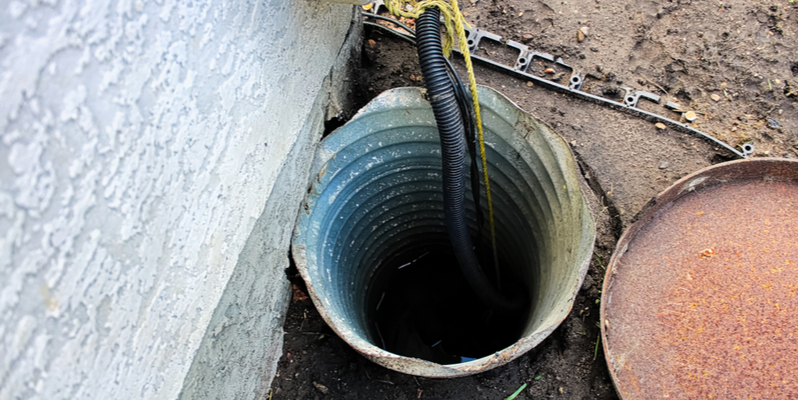This great article in the next paragraphs involving How to Care for Your Sump Pump is highly remarkable. Don't skip it.

Sump pumps are critical parts in many homes, specifically in areas vulnerable to flooding or excessive moisture. They help protect against water damage by effectively eliminating excess water from basements or crawl spaces. Nevertheless, like any other home appliance, sump pumps require routine upkeep to guarantee they function successfully when required the most. Cleaning your sump pump is a vital part of its upkeep, and understanding exactly how to do it properly can conserve you from pricey fixings and potential catastrophes.
Introduction
Keeping a tidy sump pump is essential for its proper functioning and long life. Neglecting this important task can lead to clogs, breakdowns, and inevitably, water damages to your property. Therefore, finding out just how to clean up a sump pump is essential for homeowners that depend on these devices to maintain their basements completely dry and secured.
Signs of a Dirty Sump Pump
Understanding when your sump pump needs cleansing is essential for preventing prospective breakdowns. Some typical indicators that indicate a filthy sump pump include odd sounds during operation, lowered water flow, and noticeable particles in the pit. If you notice any of these signs, it's vital to clean your sump pump quickly to prevent any kind of more issues.
Preparing for Cleansing
Before you begin cleaning your sump pump, it's vital to take some security precautions. Begin by shutting down the power to the pump to prevent any kind of electric mishaps. Additionally, wear ideal protective equipment, such as handwear covers and goggles, to protect on your own from dust, particles, and potential virus.
Comprehending the Sump Pump
Before diving right into the cleansing process, it's essential to have a basic understanding of how a sump pump works. Typically mounted in a pit or basin below the cellar floor, a sump pump includes several crucial components, consisting of a pump, a float switch, and a discharge pipeline. When water accumulates in the pit, the float button turns on the pump, which then pumps the water out with the discharge pipeline, away from the building's structure.
Detailed Guide to Cleaning a Sump Pump
Shutting down the Power
Begin by disconnecting the power supply to the sump pump to prevent any type of mishaps while cleansing.
Looking For Correct Performance
Prior to re-installing the pump, perform a quick examination to guarantee that the float switch turns on the pump correctly. Pour some water right into the sump pit and observe the pump's operation. If whatever is functioning correctly, you can reassemble the pump and reconnect the power supply.
Removing Particles and Dust
Utilize a bucket or a scoop to get rid of any type of visible particles, dirt, or debris from the sump pit. Dispose of the particles effectively to stop it from blocking the pump or the discharge pipe.
Cleaning up the Pump and Float Switch Over
As soon as the pit is free from particles, thoroughly get rid of the pump from the pit. Examine the pump and the float switch for any signs of damages or wear. Make use of a soft brush or cloth to clean the surface areas and eliminate any gathered grime.
Flushing the System
After cleaning up the pump and float button, flush the sump pit with tidy water to get rid of any kind of continuing to be dirt or debris. This will certainly aid guarantee that the pump runs efficiently and successfully.
Maintenance Tips to Keep Your Sump Pump Clean
Along with routine cleaning, there are numerous upkeep pointers you can comply with to maintain your sump pump in optimum problem:
Verdict
Cleaning your sump pump is a critical element of its upkeep and ensures that it runs properly when you need it one of the most. By complying with the actions outlined in this guide and integrating regular maintenance right into your routine, you can prolong the life-span of your sump pump and protect your home from water damages.
How To Inspect And Clean A Sump Pump
There are a few things you may want to look for when inspecting your sump pump. These include:
Leaks: If you notice any leaks around the sump pump, it likely needs to be repaired or replaced. Mud or Water: If there is any mud or water around the sump pump, it’s likely that it’s not working properly and needs to be cleaned. Noises: If you hear any strange noises coming from the sump pump, it may be indicative of a problem. Next, you’ll need to clean the sump pump. If you notice any of these issues, it’s best to clean the sump pump as soon as possible. To do this, you’ll need to remove the pump from its housing. Be sure to have a bucket handy to catch any water that may spill out. Once the pump is removed, use a brush or a spray nozzle to clean off all of the mud and debris. You may also want to check the impeller for damage or wear and tear. If you find any damage, you’ll need to replace the pump.
Once the pump is clean, reattach it to its housing and replace any parts that were removed. Be sure to test the pump before putting everything back in place. Once everything is back in order, put the cover back on the sump pit and refill it with water.
https://elekplumbing.com/blog/how-to-inspect-and-clean-a-sump-pump/

We had been guided to that report on Cleaning & Maintenance Tips for Your Home's Sump Pump from a pal on our other site. Do you know somebody else who is excited about the topic? Why not share it. Thank you for being here. Return soon.
Call Us Today